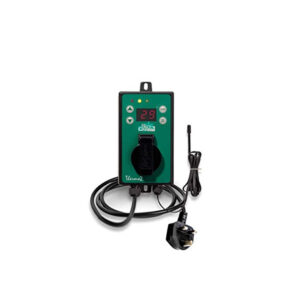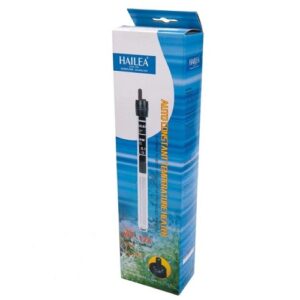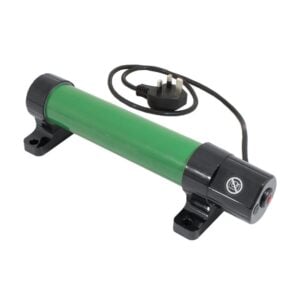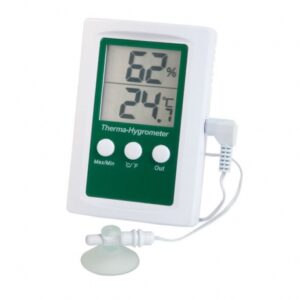Managing Growroom Temperature Fluctuations

As temperatures start to drop…
Autumn is upon us, the seasons are changing and temperatures are starting to drop, especially at night. Whether growing in a grow room or greenhouse it’s time to start thinking about how to manage temperature fluctuations to give your plants the best chance.
Why do we need to do this?
- A drop in temperature can cause yellowing of your plants.
- A drop of more than 6 degrees will cause a ‘dewpoint’ – the vapour/humidity in the air turns to liquid causing condensation within the grow area.
- Condensation within the grow area can lead to mould growth on plants and flowers.
- Condensation can also shorten the effectiveness and lifespan of Carbon Filters.
How can we reduce temperature fluctuations?
There are several ways to ‘attack’ this issue:
Environment
Introduce a greenhouse heater, controlled by a thermostat in order to manage a constant temperature.
- Look to keep fluctuation to less than 6 degrees, ideally looking for 26 degrees during the day, 24 degrees at night. For optimal growing environment, stay above 20 degrees at night.
- Invest in a min/max thermo hygrometer – It is important to keep an eye on humidity levels, as well as minimum and maximum temperature levels, as heaters tend to dry out the air and reduce humidity within a room.
Nutrient Temperature
- Its no good having a lovely warm room if you proceed to pour freezing cold water on to your plants roots – who would like having a freezing cold bucket of water poured over them when nice and snuggly?
- Feeding plants with a solution below 16 degrees can cause root shock and delay plant growth.
- For hydroponic systems – Place tank heater in nutrient reservoir to keep nutrient solution at a constant temperature. For maximum nutrient uptake solution needs to be between 20-22 degrees.
- Rule of thumb for tank heaters; 1 Watt per Litre. For example, if you have a 100L tank, you will require a 100W tank heater.
- TOP TIP – NEVER let the water level go below your installed heater – your tank heater must not be exposed to air whilst switched on. Always remember to turn your tank heater off before any tank changes.
- For hand watering – The water straight out of your tap will be too cold, allow your water to ‘warm’ up within the grow environment before hand watering. DO NOT be tempted to use a little hot water from the hot tap.
Protect from within the plant
- Just as we would have a warming cup of hot chocolate or warming soup to warm us up from the inside out, how about feeding your plant to help it deal with the cold?
- Vitalink Heat – protects plants against cold stress, helping it to survive and prosper in cold and frosty conditions allowing growers to achieve good yields all year round.
- How does it do it? Vitalink Heat contains betaines which act as osmoprotectans playing an important role in protecting the plant from damage and stress. It also contains seaweed extract, which triggers a response in the plant to better cope with the cold. Add to that the gibberellins and auxins, and the amino acids and humic acids, all contained within Vitalink Heat and everything is being given to give the plant the best chance to sustain its photosynthetic rate and growth rate during a stressful period.
- Can be used preventively or to help rescue your plants when a sharp drop in temperature occurs.
- Has the benefit of being able to use outside in your garden as well as a managed environment.
GHE TIP – A thermo-hygrometer is probably one of the most important pieces of equipment any grower within a managed environment can have. It’s the first thing we will ask you when trying to diagnose any problems with your plants. Many plant deficiencies are caused not by a lack of one or the other mono nutrients/trace elements but by the environment. Hence why we always say “environment is key”.
Product recommendations…
-
Product on sale
 Biogreen Thermo 2 Digital ThermostatOriginal price was: £89.99.£80.99Current price is: £80.99.
Biogreen Thermo 2 Digital ThermostatOriginal price was: £89.99.£80.99Current price is: £80.99. -
Product on sale
 Lighthouse 2kW Greenhouse HeaterOriginal price was: £42.99.£38.69Current price is: £38.69.
Lighthouse 2kW Greenhouse HeaterOriginal price was: £42.99.£38.69Current price is: £38.69. -
Product on sale
 Hailea Tank HeatersOriginal price was: £14.99 – £22.99.£13.49 – £20.69Current price is: £13.49 – £20.69.
Hailea Tank HeatersOriginal price was: £14.99 – £22.99.£13.49 – £20.69Current price is: £13.49 – £20.69. -
Product on sale
 Lighthouse ECOHEAT Greenhouse HeaterOriginal price was: £21.99 – £29.99.£19.79 – £26.99Current price is: £19.79 – £26.99.
Lighthouse ECOHEAT Greenhouse HeaterOriginal price was: £21.99 – £29.99.£19.79 – £26.99Current price is: £19.79 – £26.99. -
Product on sale
 ETI Min/max Therma HygrometerOriginal price was: £17.99.£16.19Current price is: £16.19.
ETI Min/max Therma HygrometerOriginal price was: £17.99.£16.19Current price is: £16.19.


